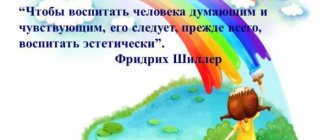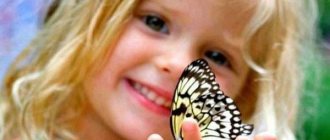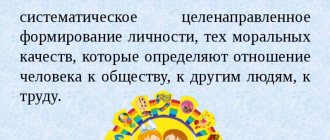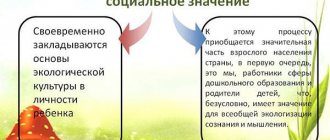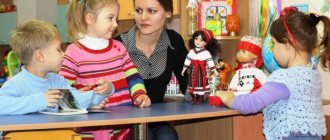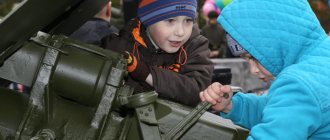Environmental issues become more and more relevant every year. Unreasonable and selfish behavior of a person leads to catastrophic consequences. It is important for us as parents to remember that an adult who harms nature was once a child who was not instilled with the proper love for the world and was not instilled with the importance of caring for natural wealth. Therefore, it is so important not only to remember the environmental education of preschoolers, but also to understand the significance of this work, to be able to structure it correctly in order to raise a humane, compassionate person who understands his creative role.
WHAT IS INCLUDED IN THE CONCEPT OF “ECOLOGY”?
We proceed from the fact that ecology is the science of the interaction of all links in nature and the influence of human activity on it. Then environmental education is, first of all, the formation in a child of a positive perception of the environment as a whole, his conviction that it is necessary to treat nature with care, using its resources wisely.
The concept of environmental education in preschool age includes:
- moral education (instilling a compassionate attitude towards the natural world around us);
- spiritual development (explanation of such concepts as the uniqueness of the ecosystem of our planet, the interconnection of all life on it, the creative role of man);
- nurturing a sense of beauty - understanding the value of the beauty of native nature;
- more intellectual development – the formation in the child’s mind of an integral system of environmental knowledge;
- formation in the child of an ecological worldview and a desire to protect nature and help it.
It is clear that to solve all these problems, the knowledge acquired by a child in a preschool institution will not be enough: the conceptual chain should begin with the family, because it is here that the child draws his first concepts about the structure of the world, the role of man in society, nature, behavioral stereotypes, etc. .
Of course, a child can think, build the first hypotheses, draw conclusions, compare facts, conduct some experiments and gain practical personal experience from about the age of 4 or 5. At the same time, children begin to actively develop an interest in nature, an emotional perception of reality, and an appreciation of reality. attitude towards the actions of others. Therefore, environmental education of preschoolers at this time will be most effective. But this does not mean at all that until this age the baby should remain in an “ecological vacuum.” Children from birth until middle school age learn from the examples of adults. Therefore, it is important that they constantly see correct environmental behavior in front of them and learn to understand and accept the following facts.
- All living beings in nature (and humans too) are interconnected: they all need each other for something and depend on each other.
- Plants and animals are alive, they can also be hurt, and the destruction of at least one species of plants or animals will lead to a disruption in the biological chain.
- You must not litter the environment; garbage should only be thrown into trash bins.
- A person should help nature, not destroy plants, not kill animals, etc.
- Nature is our common home, and what harms it harms humans.
It is important for us, adults, to constantly show children that people must protect natural resources and put a lot of work into preserving the beauty of forests, rivers, animals and plants.
Environmental education in kindergarten
Already at a young age, the baby begins to interact with peers, with adults, with objects of nature.
The child shows curiosity, asks why questions, and adopts the values and traditions of elders. Ages from 3 to 6 years are the most susceptible. A preschooler learns the experience of adults based on trust in them. From an early age he learns to actively cooperate with nature and empathize with it.
Environmental education starts in the family and continues in the nursery. Each preschool institution draws up its own program for the formation of environmental knowledge, covering the entire educational process, starting with a walk and ending with educational activities.
WORK ON FORMING AN ECOLOGICAL CULTURE IN PRESCHOOL CHILDREN
So, from about 4–5 years old, children are ready for a conscious perception of environmental principles. How can we, as parents, contribute to this?
Children's thinking at this stage still remains objective and visual. Therefore, when building your own methodology of environmental education, it is necessary to include the following important forms of work.
- Trips to nature (to the forest, to a meadow, to a river beach), during which the child will not only observe the life of plants and animals, but will learn to appreciate the beauty of nature, from the example of his parents he will learn to take care of it, and will be able to learn a lot of new things from adults .
- Work on the site (in the vegetable garden, orchard, at the dacha), when a preschooler learns creative activity, can evaluate the result of this work, and forms an understanding of how important it is to take care of the surrounding nature.
- Caring for living pets (cat, dog, parrot, fish), which instills in the child love for our smaller brothers, teaches responsibility towards them and compassion.
- Caring for indoor plants, giving you the opportunity to observe their growth and development, learn the patterns of vegetation and understand your own role in this.
- Family environmental events (clean-up work, planting trees, creating flower beds, hanging feeders), instilling hard work and a caring attitude towards the environment.
- Nature calendars or observation diaries, where the baby, together with his parents, will enter data about changes in nature that occur throughout the year.
At the same time, the role of parents in the formation of a child’s environmental culture comes down not only to the role of mentors who set an example. During such work, adults teach children important things:
- humane interaction with the outside world, environmental activities;
- the ability to analyze observed processes;
- deduce patterns of natural development, draw conclusions;
- make basic predictions about the consequences of certain human actions.
Advice
Arrange environmental exhibitions at home, where the child’s independent work or joint work with parents will be presented (crafts made from natural materials, thematic drawings made by the child personally or together with parents). They can be organized, for example, for such environmental holidays as:
- Spring Day (March 1);
- Earth Day (March 20);
- Vernal Equinox Day (March 20);
- Bird Day (April 1);
- World Sun Day (May 3).
Or for national holidays:
- Ivan Kupala;
- Elijah's day;
- Fedorin's day, etc.
Such exhibitions will increase the child’s interest in environmental issues and help appreciate the beauty of nature. And if you also introduce your child to these holidays and folk beliefs, you will significantly enrich his horizons. This is a very useful educational element both for younger preschoolers (then the emphasis will be on creativity together with you) and for older ones (more independence).
Conditions for environmental education
The formation of knowledge and skills in ecology requires compliance with certain conditions in preschool institutions. The process itself involves nurturing the ecological culture of children of senior preschool age using the following approaches:
- integrated approach, i.e. implementation of the process of environmental education through various types of activities: musical, theatrical, artistic, physical, gaming, labor;
- organization of an ecological and developmental environment in kindergarten;
- use of the surrounding nature as the development of ecological culture;
- implementation of monitoring to identify the level of environmental education of preschool children.
WHAT DOES THIS LOOK LIKE IN PRACTICE?
Behind all these seemingly sophisticated concepts lies a daily work that is invisible to the child. The peculiarities of the formation of thinking, as we remember, at this age are expressed by objectivity and clarity. Therefore, when going for a walk or going into nature, parents ask the child to evaluate what changes in nature have occurred recently (flowers have bloomed, dandelions have turned grey, chicks are chirping in the trees, it has become slushy, birds have flown away, snow has fallen, etc. ).
Working in the garden or vegetable garden, the child gains knowledge about what period of the year what work should be done in order for flowers to bloom, fruits and vegetables to ripen. At the same time, you can explain to him why butterflies flying around, beetles, ants, birds are needed, what their benefits and relationships are. Tell them that they all have their own home, their parents have kids that they take care of and are very worried when something happens to them - just like people.
By their example, adults show a creative attitude towards nature (water, feed, loosen), explain that squashing bugs, catching butterflies, breaking branches just like that is inhumane (and they themselves do not do this). At the same time, you can touch the grass, smell the flowers, enjoy the singing of birds, observe the changes that occur every day (this is where the calendar comes in handy), and draw conclusions about the laws of nature.
During family environmental events, children will learn what trees are for, why it is so important to take care of them, why one should not litter the environment with waste, and how important it is to feed the birds in the garden, yard, and park in winter.
It’s good if the child starts asking a lot of questions about this in order to expand the range of existing knowledge and systematize the information received.
Advice
If your baby doesn’t bombard you with “why” questions, ask him yourself. Provoke your child to think, compare, and draw conclusions. (Why do you think the sunflower closed its cap? Why is the berry in the sun already red, but under the leaf not yet? What will happen if bees don’t fly into our garden? Why do trees shed their leaves?). Find answers together. This is a good tool not only for environmental education, but also for the development of preschoolers’ speech.
When a child takes care of an indoor flower or animal, adults also teach him to create, preserve, and help. Their stories, accompanied by visual, lively pictures, are not perceived by the child as teaching. This is a natural process. The formation of environmental consciousness in preschool childhood should take place unnoticed.
Creating a favorable ecological environment
The process will be successful when a favorable, positive ecological environment is created around the child.
The presence of experimental plots in the garden, an ecological trail, a winter garden, an aquarium, and a living corner makes it possible to increase the efficiency of all forms and methods of work in this area.
There should be no unfoundedness. Children need to see everything in person, touch it, smell it, stroke it. Then the common efforts of educators and parents will bring results.
THE BEST TOOL OF EDUCATION IS GAME
This is true. Gaming activities develop, educate, teach. At the same time, it is fun, interesting, without coercion. So the development of a child through didactic games is one of the most effective means of teaching environmental (and any other) literacy.
The game can be played both during walks and outside.
In the first case, a preschooler can study the appearance and properties of earth, water, clay, sand, ice, and snow. For example, you can offer your child:
- play snowballs;
- To make a snowman;
- hold the ice in your hands, breathe on it;
- make a sun or a tower out of ice floes;
- make Easter cakes from sand;
- compare clay and earth by touch;
- make bricks from clay;
- pass water mixed with clay through a layer of sand;
- compare how sand and clay behave in water, etc.
In the second case, you can arrange a family game at home, inviting friends to visit. These could be, for example, games in the form of lotto:
- What grows where?
- Who lives where?
- Who eats what?
In this case, you need to choose among the lotto cards those that correspond to the environment depicted on each card.
Games in the form of quizzes:
- find by description (you need to find a picture that matches the description of a bird, animal, season);
- recognize and name (recognize an animal or bird by sounds, tracks);
- when does this happen (determine the time of year, natural phenomenon from the description).
There are many educational games on ecology. You can throw a ball to a child, naming a general class (for example, pets), and in response the child, having caught the ball, must give an example. You can arrange a competition to see who can best draw what is described on the card in text format. Or divide the children into 2 groups and ask them to unite in such a way that the upper parts of the plants in the pictures of some coincide with the lower parts of the pictures of others (tops and roots). You can ask kids to imitate the movements of the birds or animals shown in the picture. Or ask them to remove an extra link in some chain of images...
Effective environmental education through play activities
Through the game, the understanding of the life of plants and animals gained during excursions and direct contact with the inhabitants of the meadow, forest, and pond is consolidated.
Ecological game technology:
- Selecting a topic from the program.
- Determining the purpose and conditions of the game.
- Thinking through the stages of the game.
- Distribution of roles.
- Getting to know the rules.
The method of teaching such games depends on the characteristics of the preschooler’s age. There are different types of games: subject, board, verbal, creative. When creating creative game situations, you can use fairy-tale characters.
For example, Little Red Riding Hood goes to her grandmother through the forest and can meet its different inhabitants and collect leaves of forest trees. Toys are important for games: dolls, fish, animals. They should be aesthetic, bright, realistic. In this case, the game stimulates the activity of children and increases their emotional mood.
READING IS THE BEST STUDY
Preschool age is the time when reading books evokes the most vivid emotional response in a child, makes you empathize and think about what you read. The conclusions drawn after reading the book remain in the child’s memory for a long time.
Literature on environmental education is, first of all, the works of V. Bianchi. In the form of entertaining stories or fairy tales, they help the child understand complex natural phenomena, the patterns of the natural world, talk about the interaction of the organism with the environment, and the forms of its adaptation to its habitat.
You can also tell a preschooler about the beauty and diversity of native nature using the examples of the works of M. Prishvin, F. Tyutchev, A. Pushkin, A. Fet, K. Ushinsky, N. Nekrasov, L. Tolstoy, N. Sladkov and others.
Reading children's encyclopedias devoted to natural areas, climate, animals, and plants will also be useful in terms of improving environmental education. Bright pictures in them contribute to more effective memorization of accurate information. But fairy tales, proverbs and sayings, which can also be classified as “ecological”, carry figurative information, which is also useful.
Raising a child begins in the family. The harmonious development of children in the future depends on how correct it is. In environmental terms, too.
Problems of environmental education
The main problem in this direction is the low equipment of gardens. Conditions are necessary to create a winter garden and mini-laboratories. To carry out gaming activities, you need didactic materials, maps, manuals, models, toys.
The second problem is the viability of the developed education system. The environmental education program and the entire methodology for environmental education of preschoolers will be implemented in the case when each stage of work and the result of the work are thought out: what we want the student to be like when he enters school.

